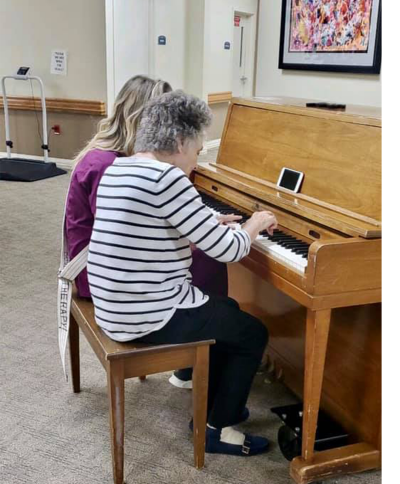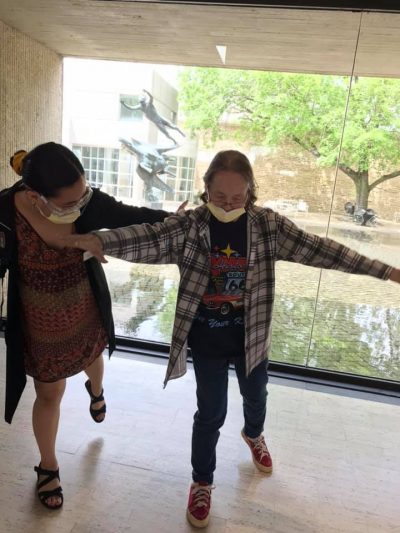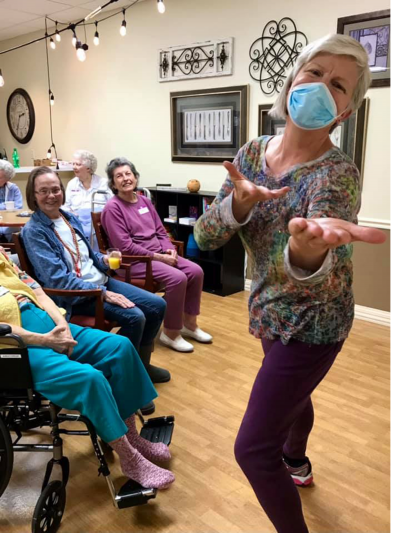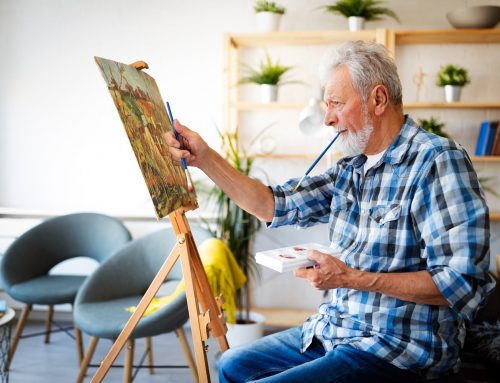Music and movement can have a profound impact on those suffering from memory loss. The benefits of these things are wide reaching and can be helpful in all stages of aging. Music can be especially beneficial in the early stages of Alzheimer’s and dementia.
Since this type of activity can be so beneficial, I’d like to share a few pointers on how to engage with your loved one so that you both can experience the benefits of these activities. These tips will help you connect, get active, and engage with those who may need a little extra help. And as always, we are going to do it with a little Montessori twist.
First of all, it’s important to remember that at first, it can be challenging to get your loved one excited about doing an activity. There are various factors involved: their health, ability, or desire, or even just a little embarrassment about getting up to sing and dance. So here are a few pointers to help you get started:

- Remember to ask first. Don’t push them to do more than they are able. Asking is an essential principle of the Montessori method.
- You also need to be conscious of your loved one’s ability. Don’t ask them to do activities or anything else that may cause them to struggle. At the same time, this doesn’t mean you have to give up; it just means you may need to make some adjustments. Pare down any of the below activities or make modifications to fit your loved one’s abilities.
- You can even make adapting the activity part of the process. Talk with your loved one about their hesitations and limitations to solve the problem together. Montessori is about engaging. And what better way to engage than by doing a little troubleshooting?
- Your loved one may be perfectly able to get up and dance and sing, or even tap dance, but they might be nervous. It’s not uncommon for those with memory loss, and even those of us with the sharpest of memories, to be shy or feel self-conscious about dancing or singing. Remember to be encouraging and let them move at their own pace. When doing Montessori activities, it can be beneficial to let your loved one know that they’re doing a good job and that we are all just doing the best we can.
Just put on some music!
We are all about adapting here at Arbor Springs. So while it is fantastic to get up and move around, sometimes that’s just not an option. What’s great is that just listening to music can be very beneficial on its own!
- As with all of our activities, talk with your loved one about what they feel comfortable doing. Communication is vital not just from a Montessori standpoint but also from a health and safety perspective. Make sure your loved one isn’t overexerting themselves.
- Be sure to get everything set. Get the music ready; if you don’t know what type of music they like, this is another excellent opportunity to engage with them. Be sure you have a comfy spot to sit and maybe even some refreshments.
- Once you’ve determined what they want and are able to do, and have everything together, be sure to invite them to join you.
- While you are listening, have them talk with you. You can talk about anything, but having them describe the music, what it sounds like, and how it makes them feel, is a great way to incorporate Montessori principles into your listening. Either way, listening to music is fantastic for mind and memory!
Singing (with Montessori)…

Singing can be excellent for those struggling with Alzheimer’s and dementia. It engages the mind and can help with memory, especially if you and your loved one are singing songs you both remember fondly.
- Talk with your loved one about what they might want to sing and find something they are comfortable with and will enjoy. This helps everyone have fun and stay engaged.
- Remember to get everything ready. As with all our Montessori activities, it is important to have all your materials on hand. Also, grab some comfy chairs or sit somewhere that makes the activity more accessible. It might be good to have some water on hand as well.
- Make sure they know the words or lyrics are written down somewhere easily accessible. Making the activity simple, straightforward, and easy to achieve is essential when working Montessori into any activity, including your singing.
- If you are reading the lyrics, possibly incorporate color. You could highlight each verse in a particular color and the chorus in another. This is an excellent Montessori tip that is also super helpful for your loved one.
Dancing (with Montessori)…
Dancing is fantastic not only for your body but also for your brain. Now, we know you might not be able to cut a rug like you used to, but when we talk about dancing, sometimes that’s just getting up and moving your body to some music. While this can be difficult, if your loved one is able to dance a bit, it can have tremendous benefits!

- Be sure to help your loved one with the physical movement and encourage them as they go along. Positive reinforcement is key in Montessori activities.
- Take it slow and move at their pace. Always be conscious both of their ability and of their attention span. This balance may be more complicated than the steps.
- Most importantly, when dancing or doing any physical activity, safety is top priority! Be sure to stay safe and keep checking that your loved one is feeling alright. When dancing or doing any physical activity, safety is a top priority.
- Talk them through dancing and have them explain what they are doing. Communication and this layer of engagement during the activity help with the mind and memory.
- Incorporate color into dancing as well, just like listening to music and singing. If there are movements, like turning to the left or turning around, try associating that with color. Hanging a colorful piece of paper on a wall or using a colorful chair is perfect. That way, “turn around” transforms into “turn to face the red chair,” and doing this transforms your dancing into a Montessori activity.
Just get up and move!
If you don’t want to do any of the activities mentioned, just try getting up. Movement is so crucial to staying both mentally and physically healthy. At the end of the day, if you put on some music and walk around your room, that might just be a great way to start. Take it in small steps.
I hope some of these tips are helpful. If you want more activities that benefit from a Montessori twist, check out some of our previous posts.
We are always here to answer your questions. So if you or your loved one is struggling with Alzheimer’s or dementia, don’t hesitate to reach out to us today!



Leave A Comment